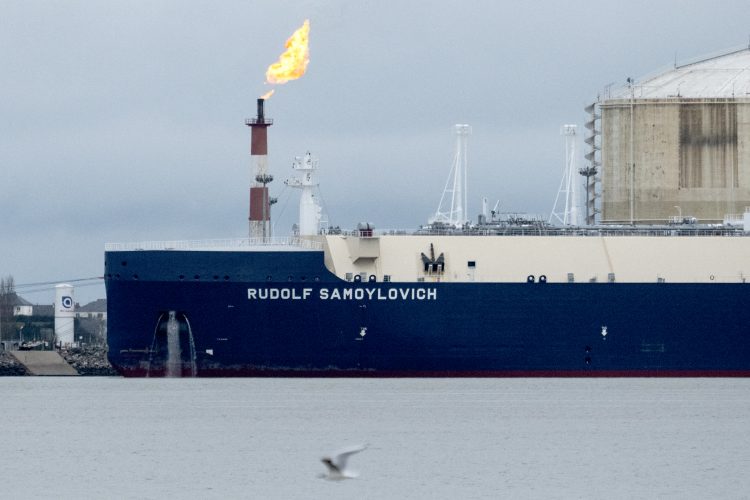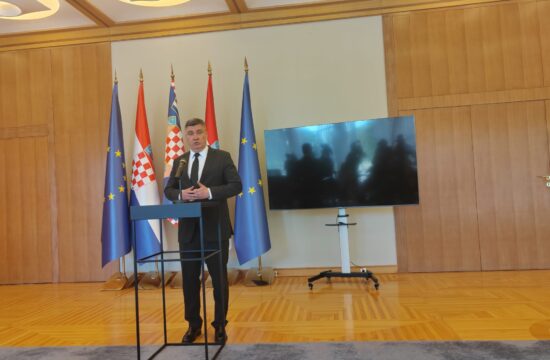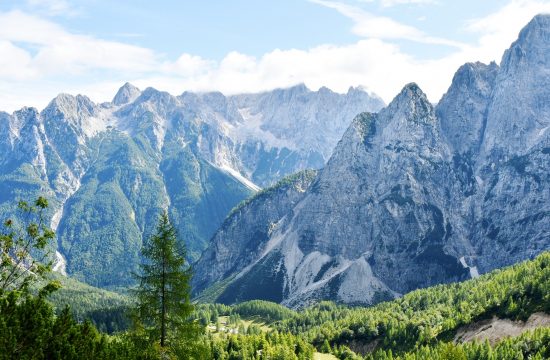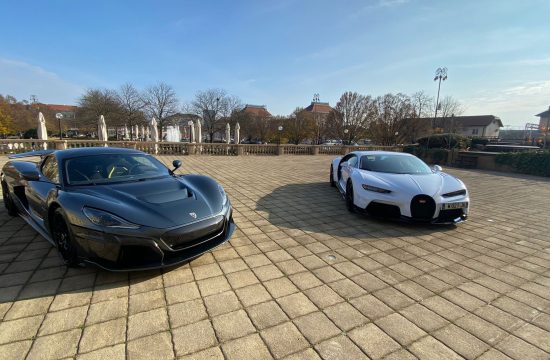
The European Union has agreed to ration its natural gas this winter to prevent a severe supply shock. But the bloc has watered down its ambitions by offering countries some significant leeway. Pročitaj više
On Tuesday, EU energy ministers agreed to a voluntary target to reduce gas usage by 15% between August and March 2023. That reduction is measured against each country’s average gas consumption during the same months over the previous five years.
The EU Commission first unveiled the 15% target in its “Save Gas for a Safe Winter” plan last week, which included a proposal for a new law that, if passed, would give it the power to force states to meet mandatory reduction targets in exceptional circumstances.
But objections from some countries over the past few days have pushed the bloc to make key concessions, taking into account their varying levels of dependency on gas and levels of storage.
The EU will now exempt countries that are not interconnected to other members’ gas networks from mandatory demand reduction targets, as “they would not be able to free up significant volumes of pipeline gas to the benefit of other member states,” the EU Council, the bloc’s political union, said in a press release.
The Council also detailed a number of scenarios that would allow for the relaxation of countries’ reduction targets, including where states overshoot their gas storage targets or are particularly reliant on gas to power critical industries.
“I know the decision was not easy. But I think, at the end, everybody understands that this sacrifice is necessary,” said Jozef Síkela, the Czech minister of industry and trade, who holds the rotating presidency of EU Council, at a press conference. “We have to and we will share the pain.”
Síkela added that countries had reached a “satisfying compromise.”
The plan is not yet written into law — at least 15 of the bloc’s 27 member states, representing 65% of its total population, still need to approve the proposals.
Separately, the bloc will need to take a different vote on the Commission’s proposal to enforce mandatory reduction targets.
Missing turbine
Meanwhile, a gas emergency is developing in Europe.
Gazprom, Russia’s state energy company, said on Monday that it would shut down a gas turbine on the Nord Stream 1 pipeline for repairs, cutting flows to 33 million cubic meters a day from Wednesday — or just 20% of its daily capacity. Gas had been flowing at 40% capacity after Russia slashed exports in response to Western sanctions.
Kadri Simson, European commissioner for energy, called the latest reduction “a politically motivated step” on Tuesday.
She added that Gazprom’s announcement “underlined once again that we have to be ready for the possible supply cuts from Russia at any moment.”
The news caused European benchmark gas prices to rise 10% on Monday over Friday, according to data from the Intercontinental Exchange.
Flows through the pipeline — which last year transported 40% of the bloc’s total pipeline imports from Russia last year — had already been slashed by two-thirds in June after Gazprom blamed the West for preventing the return of another turbine from Canada, where it was being repaired.
Last week, Gazprom reopened the Nord Stream 1 pipeline after 10 days of routine maintenance work. Many EU officials had worried that Moscow would take the opportunity to keep the taps turned off by way of retaliation for sanctions imposed following Russia’s invasion of Ukraine.
While Europe’s fears were well founded — Russia has severed its gas supply to several European countries and energy companies in recent months — Gazprom restarted flows without a hitch, though still at just 40% of the pipeline’s capacity.
Earlier this month, the Canadian government said the Siemens-made turbine could return to Germany under a sanctions waiver. But, on Monday, Gazprom said paperwork received by Siemens to repatriate the turbine had not resolved certain problems, again raising the specter of another cut to Europe’s gas deliveries.
Bad timing
The very real risk that Moscow could turn off the taps has energized the bloc to find alternate energy sources and rapidly fill its gas storage facilities ahead of winter.
Winding down imports of Russian gas will be no small feat for many EU countries that have historically relied on Moscow’s supplies to power their homes and industries.
According to the International Energy Agency, the country accounted for about 45% of the bloc’s total gas imports in 2021.
It has already made great strides. The EU is moving quickly to reduce its dependence on Moscow anyway, ramping up imports of liquefied natural gas and pledging to slash consumption of its Russian gas by 66% before the end of the year.
But a historic heatwave that pushed temperatures past 40 degrees Celsius in parts of the continent last week has caused demand for air conditioning to spike.
Earlier this month, Enagas, Spain’s gas transmission system operator, said that demand for natural gas to produce electricity had hit a new record of 800 gigawatt hours.
“This huge increase in the demand for natural gas for electricity production has been mainly due to the high temperatures recorded as a result of the heatwave,” Enagas said in a press statement last week.
High demand for gas combined with much-reduced Russian flows could severely limit Europe’s ability to fill its stores before temperatures start to drop in a few months.
The bloc has set a target for member states’ gas stores to be at least 80% full by November.
They are currently around 67% full, according to the Gas Infrastructure Europe. That’s a lot more than the same time last year.
But Fatih Birol, executive director of the International Energy Agency, last week described the situation in Europe as “perilous” and said it must prepare for a “long, hard winter.”
According to the IEA, even if European countries manage to fill their gas stores to 90% of their capacity, it is still likely to face supply disruptions early next year if Russia decides to cut off gas deliveries from October.





Kakvo je tvoje mišljenje o ovome?
Budi prvi koji će ostaviti komentar!